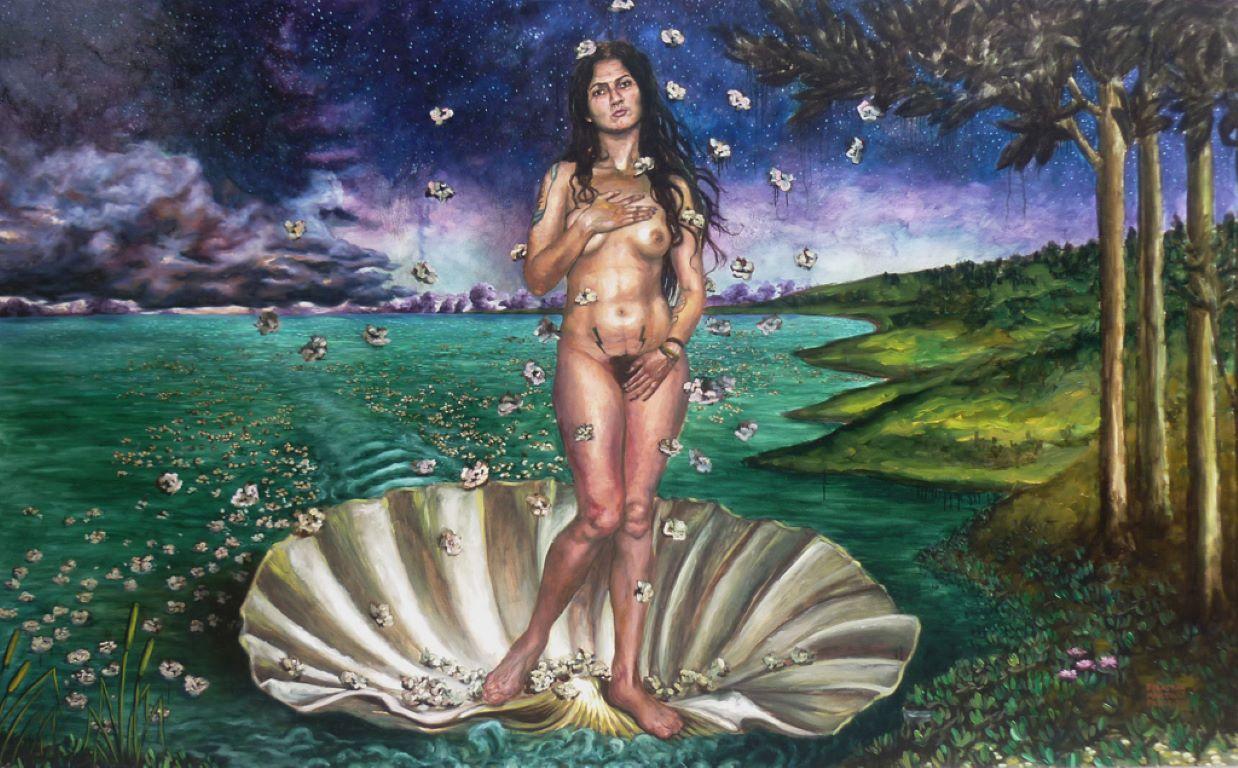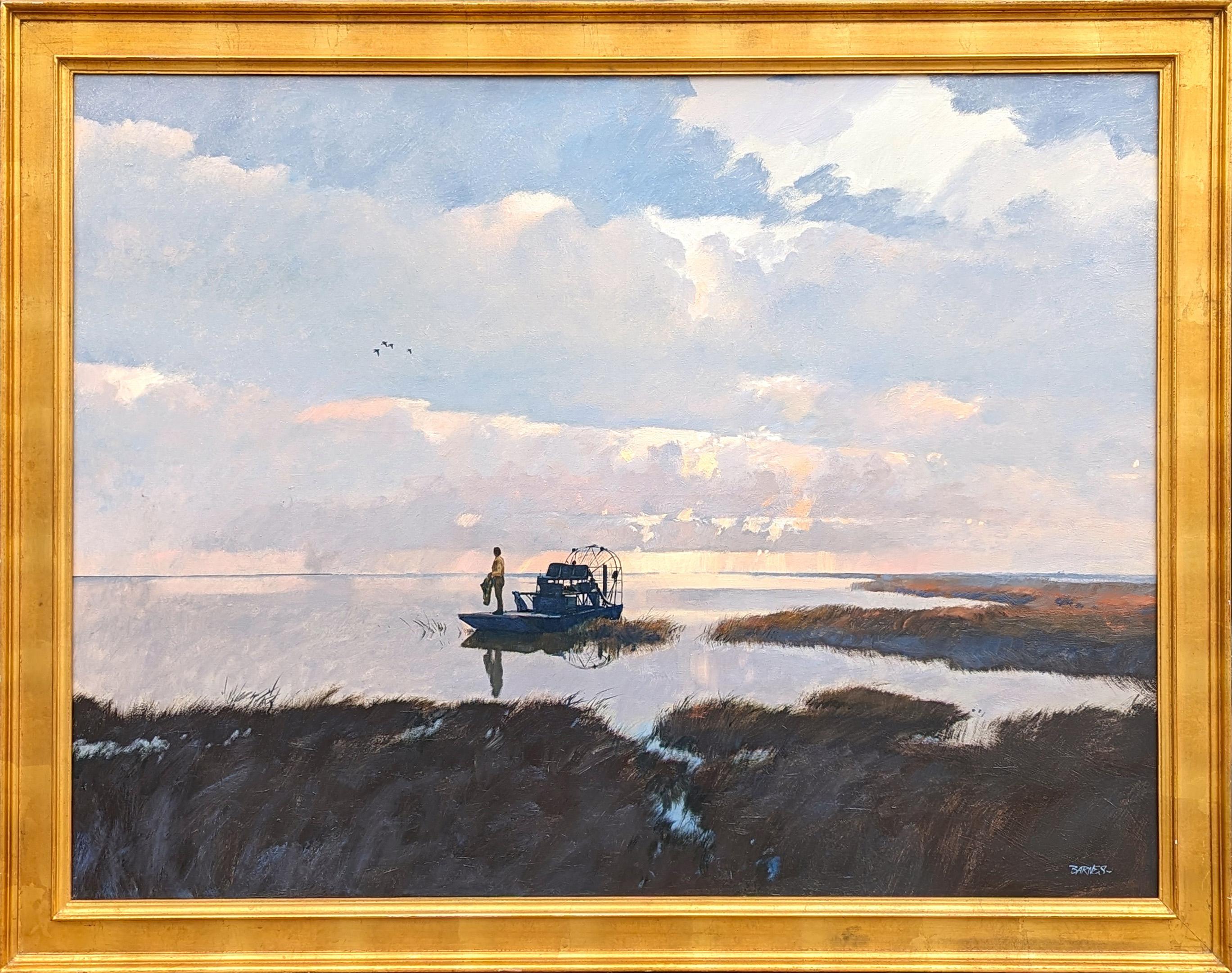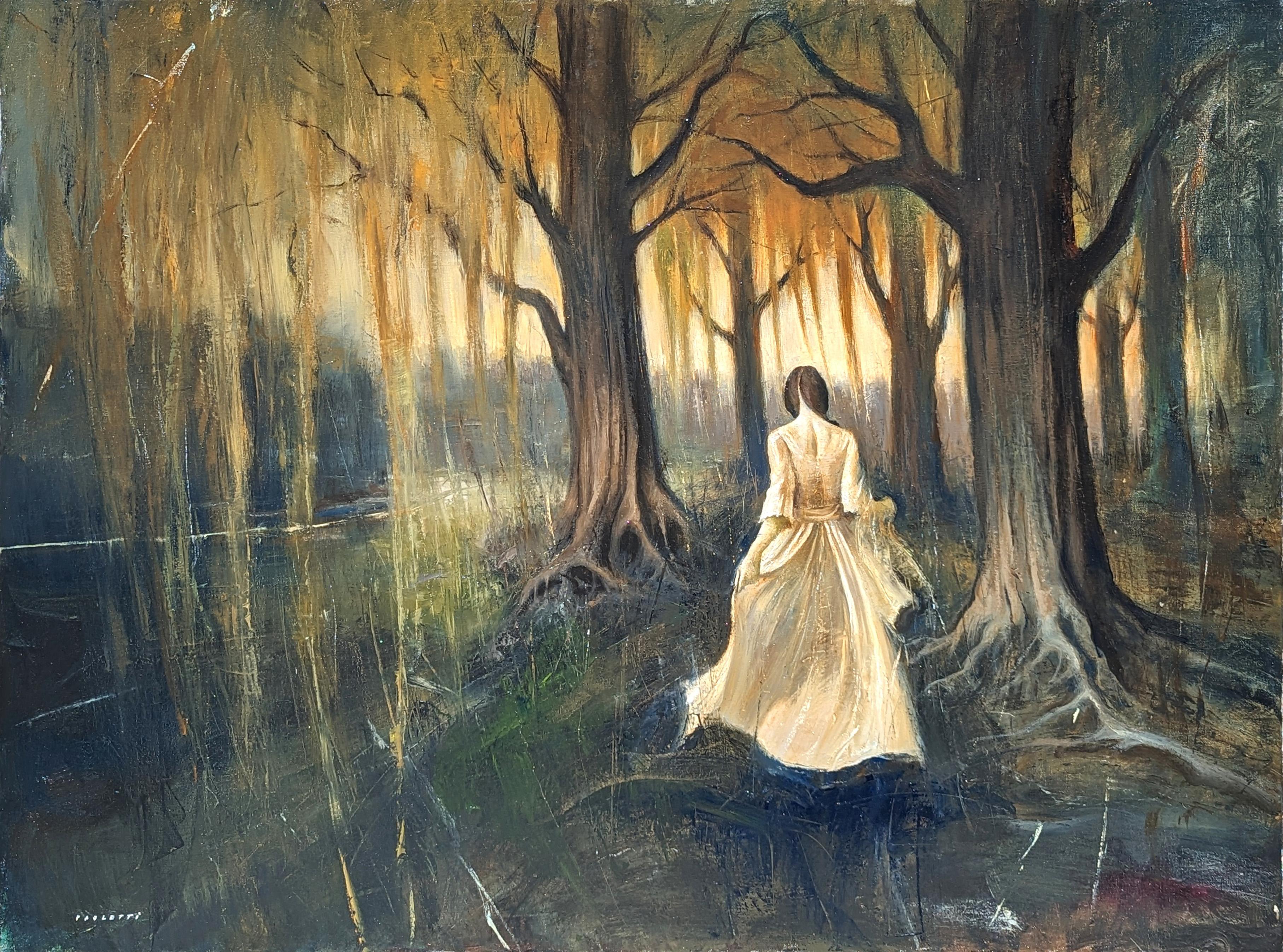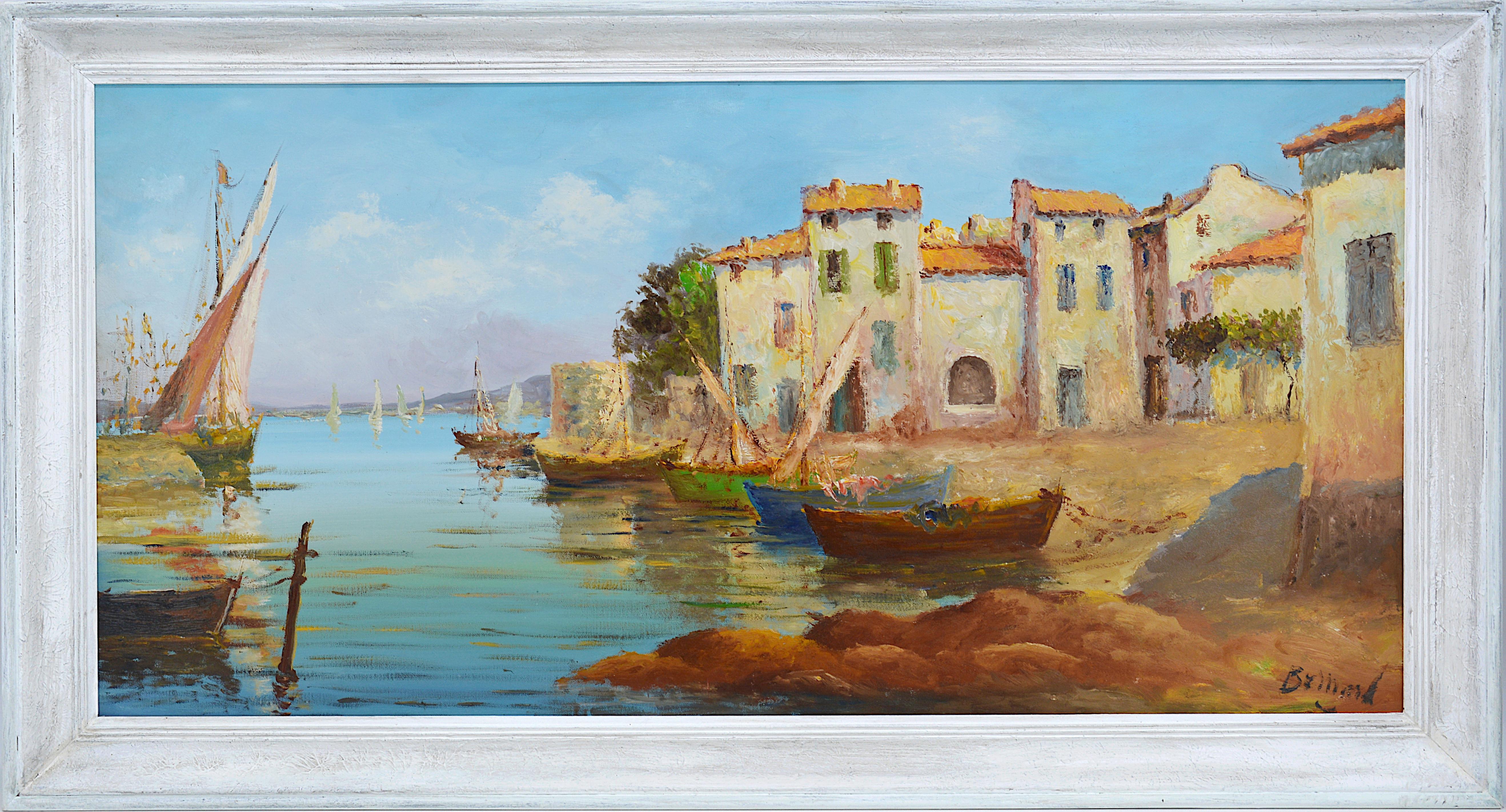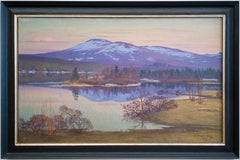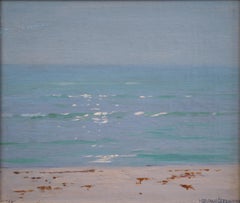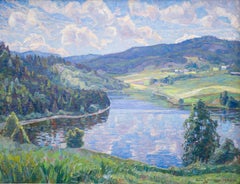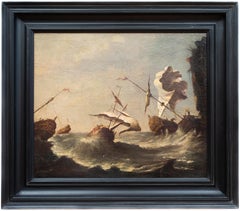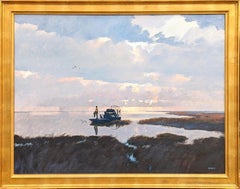Items Similar to Scandinavian Lake View by Swedish Artist Per Julius (b.1951), Oil on Canvas
Want more images or videos?
Request additional images or videos from the seller
1 of 9
Per JuliusScandinavian Lake View by Swedish Artist Per Julius (b.1951), Oil on Canvas20th cent
20th cent
About the Item
A beautiful original oil painting by Swedish artist Per Julius (b.1951).
Julius is best known for his beautiful depictions of the Scandinavian nature and this is a prime example of his
talent is this oeuvre.
oil on canvas
signed Per Julius
canvas dimensions 41.5 x 60.5 cm
frame 46 x 65.5 cm
Provenance:
A Swedish private collection
- Creator:Per Julius (1951, Swedish)
- Creation Year:20th cent
- Dimensions:Height: 16.34 in (41.5 cm)Width: 23.82 in (60.5 cm)
- Medium:
- Movement & Style:
- Period:
- Condition:Very good condition, frame with patina. Ready to hang!
- Gallery Location:Stockholm, SE
- Reference Number:1stDibs: LU1445211295402
About the Seller
5.0
Platinum Seller
Premium sellers with a 4.7+ rating and 24-hour response times
Established in 2020
1stDibs seller since 2020
175 sales on 1stDibs
Typical response time: 1 hour
Associations
International Confederation of Art and Antique Dealers' Associations
- ShippingRetrieving quote...Shipping from: Stockholm, Sweden
- Return Policy
Authenticity Guarantee
In the unlikely event there’s an issue with an item’s authenticity, contact us within 1 year for a full refund. DetailsMoney-Back Guarantee
If your item is not as described, is damaged in transit, or does not arrive, contact us within 7 days for a full refund. Details24-Hour Cancellation
You have a 24-hour grace period in which to reconsider your purchase, with no questions asked.Vetted Professional Sellers
Our world-class sellers must adhere to strict standards for service and quality, maintaining the integrity of our listings.Price-Match Guarantee
If you find that a seller listed the same item for a lower price elsewhere, we’ll match it.Trusted Global Delivery
Our best-in-class carrier network provides specialized shipping options worldwide, including custom delivery.More From This Seller
View AllMountain View from Hålland, Åre by Swedish Artist Ante Karlsson-Stig, From 1932
Located in Stockholm, SE
The painting we are selling is a breathtaking mountain view from Hålland in Jämtland, Sweden, created by Ante Karlsson-Stig in 1932. Ante Karlsson-Stig (1885-1967) was a Swedish pain...
Category
1930s Naturalistic Landscape Paintings
Materials
Canvas, Oil
Ocean View from the West Coast by Swedish Artist Herman Österlund, 1916
Located in Stockholm, SE
Herman Österlund (1873-1964) Sweden
Ocean View from the West Coast, 1916
oil on canvas
signed and dated Herman Österlund 1916
canvas dimensions 14.37 x 16.73 inches (36.5 x 42.5 cm...
Category
1910s Naturalistic Landscape Paintings
Materials
Canvas, Oil
Landscape from Nordingrå, 1935 by Ultramarine Johansson
Located in Stockholm, SE
Carl Johansson, also known as "Ultramarin Johansson," was a Swedish artist born in 1863 and known for his distinctive blue-toned paintings. His work often depicted landscapes, seascapes, and cityscapes, capturing the beauty and essence of Sweden's natural landscapes.
We are proud to offer one of his late works from 1935 for sale. This painting depicts a beautiful landscape from Nordingrå, a small village situated on the High coast of Sweden. The beauty of Nordingrå has captured many artists in the 19th-century, inspiring many famous painters, including Helmer Osslund...
Category
1930s Post-Impressionist Landscape Paintings
Materials
Canvas, Oil
Shipping in Stormy Waters, Attributed to Italian Artist Francesco Guardi
By Francesco Guardi
Located in Stockholm, SE
The splendour of the tragic sea
Francesco Guardi and maritime painting in Venetian art
No Venetian painter was a stranger to the sea. After all, Venice was not only one of the most prominent ports of the Mediterranean, but indeed a city literally submerged in the ocean from time to time. Curiously however, the famous Venetian school of painting showed little interest in maritime motifs, favouring scenes from the iconic architecture of the city rather than seascapes. That is why this painting is a particularly interesting window into not only the painter Francesco Guardi himself – but to the significance of the element of water in art history, in absence as well as in the centre of attention.
Whether it be calm, sunny days with stunning views of the palaces alongside the canals of Venice or – more rarely – stormy shipwrecking tragedies at sea, water as a unifying element is integral to the works of painter Francesco Guardi (1712–1793). During his lifetime, Venetian art saw many of its greatest triumphs with names like Tiepolo or Canaletto gaining international recognition and firmly establishing Venice as one of the most vibrant artistic communities of Europe. While the city itself already in the 18th century was something of an early tourist spot where aristocrats and high society visited on their grand tour or travels, the artists too contributed to the fame and their work spread the image of Venice as the city of romance and leisure to an international audience, many of whom could never visit in person.
Still today, the iconic image of Venice with its whimsical array of palaces, churches and other historic buildings is much influenced by these artists, many of whom have stood the test of time like very well and remain some of the most beloved in all of art history. It was not primarily subtility, intellectual meanings or moral ideals that the Venetian art tried to capture; instead it was the sheer vibrancy of life and the fast-paced city with crumbling palaces and festive people that made this atmosphere so special. Of course, Venice could count painters in most genres among its residents, from portraiture to religious motifs, history painting and much else. Still, it is the Vedutas and views of the city that seems to have etched itself into our memory more than anything else, not least in the tradition of Canaletto who was perhaps the undisputed master of all Venetian painters.
Born into his profession, Francesco lived and breathed painting all his life. His father, the painter Domenico Guardi (1678–1716) died when Francesco was just a small child, yet both he and his brothers Niccolò and Gian Antonio continued in their fathers’ footsteps. The Guardi family belonged to the nobility and originated from the mountainous area of Trentino, not far from the Alps. The brothers worked together on more challenging commissions and supported each other in the manner typical of family workshops or networks of artists. Their sister Maria Cecilia married no other than the artist Giovanni Battista Tiepolo himself, linking the family to the most renowned Venetian name of the time. During almost a decade, Guardi worked in the studio of Michele Giovanni Marieschi, sometimes simply known as Michiel, a painted similar in both style and motif. Canaletto is, however, the artist Guardi is most often compared to since they shared a mutual fascination for depicting the architecture and cityscape of Venice.
During the course of his career, Guardi tried his hand in many different genres. He was as swift in painting landscapes, Vedutas of Venice, sacred motifs, interiors and architectural compositions as he was in a number of other motifs. His style is typical of the Venetian school but also distinct and personal once we look a little closer. There is an absolute certainty in the composition, the choice of which sometimes feels like that of a carefully calculated photograph – yet it is also very painterly, in the best sense of the word: fluid, bold, sensitive and full of character. The brushwork is rapid, intense, seemingly careless and extraordinarily minute at the same time; fresh and planned in a very enjoyable mixture. His interiors often capture the breath-taking spacious glamour of the palaces and all their exquisite decor. He usually constructed the motif through remarkably simple, almost spontaneous yet intuitively precise strokes and shapes. The result was a festive, high-spirited atmospheric quality, far away from the sterile and exact likeness that other painters fell victim to when trying to copy Canaletto.
The painting here has nothing of the city of Venice in it. On the contrary, we seem to be transported far away into the solitary ocean, with no architecture, nothing to hold on to – only the roaring sea and the dangerous cliffs upon which the ships are just moments away from being crushed upon. It is a maritime composition evoking both Flemish and Italian precursors, in the proud tradition of maritime painting that for centuries formed a crucial part of our visual culture.
This genre of painting is today curiously overlooked, compared to how esteemed and meaningful it was when our relationship to the sea was far more natural than it is today. When both people and goods travelled by water, and many nations and cities – Venice among them – depended entirely on sea fare, the existential connection to the ocean was much more natural and integrated into the imagination. The schools and traditions of maritime art are as manifold as there are countries connected to the sea, and all reflect the need to process the dangers and wonders of the ocean.
It could symbolize opportunity, the exciting prospects of a new countries and adventures, prospering trade, beautiful scenery as well as war and tragedy, loss of life, danger and doom. To say that water is ambivalent in nature is an understatement, and these many layers were something that artists explored in the most wondrous ways. Perhaps it takes a bit more time for the modern eye to identify the different nuances and qualities of historic maritime paintings, they may on first impression seem hard to differentiate from each other. But when allowing these motifs to unfold and tell stories of the sea in both fiction and reality – or somewhere in between – we are awarded with an understanding of how the oceans truly built our world.
In Guardi’s interpretation, we see an almost theatrically arranged shipwrecking scene. No less than five ships are depicted right in the moment of utter disaster. Caught in a violent storm, the waves have driven them to a shore of sharp cliffs and if not swallowed by the waves, crushing against the cliffs seems to be the only outcome. The large wooden ships are impressively decorated with elaborate sculpture, and in fact relics already during Guardi’s lifetime. They are in fact typical of Dutch and Flemish 17th century ships, giving us a clue to where he got the inspiration from. Guardi must have seen examples of Flemish maritime art, that made him curious about these particular motifs. One is reminded of Flemish painters like Willem van de Velde and Ludolf Backhuysen, and this very painting has indeed been mistakenly attributed to Matthieu van Plattenberg...
Category
18th Century Old Masters Landscape Paintings
Materials
Canvas, Oil
$46,421 Sale Price
32% Off
Free Shipping
Impressionistic View over Strandvägen, Stockholm
Located in Stockholm, SE
This painting by Bernhard Oscarsson (1894-1977) is a captivating visual narrative of Stockholm's serene beauty. Oscarsson, a student of Caleb Althin's painting school and the Royal S...
Category
1930s Impressionist Landscape Paintings
Materials
Canvas, Oil
"Walpurgis Night Reflections" by Jonny Oppenheimer
Located in Stockholm, SE
We are proud to present "Walpurgis Night Reflections," an enchanting painting by the German-Swedish artist Jonny Oppenheimer (1923-2005).
This piece is a captivating representation ...
Category
Mid-20th Century Landscape Paintings
Materials
Canvas, Oil
$1,828 Sale Price
25% Off
You May Also Like
Vedutist Italian painter - 18/19th century landscape painting - View of Florence
Located in Varmo, IT
Florentine painter (18th-19th century) - View of Florence from Piazzale Michelangelo.
32 x 51 cm without frame, 42 x 63 cm with frame.
Antique oil painting on canvas, in a gilded w...
Category
Late 18th Century Naturalistic Landscape Paintings
Materials
Canvas, Oil
$2,326 Sale Price
47% Off
Free Shipping
Large "View of Venice", 19th Century Oil on Canvas by Karl Kaufmann
By Karl Kaufmann
Located in Madrid, ES
KARL KAUFMANN
Austrian, 1843 - 1901
VIEW OF VENICE
signed & dated "K. Kaufmann 1894" (lower right)
oil on canvas
38-3/4 x 56-1/8 inches (98 x 142 cm.)
framed: 41-1/2 x 59-1/4 inches ...
Category
1890s Naturalistic Figurative Paintings
Materials
Oil, Canvas
La Virgen de las Docas
Located in Barcelona, BARCELONA
This artwork presents a modern interpretation of the classical theme of the "Birth of Venus." Central to the composition is a figure emerging gracefully from a large shell, reminisce...
Category
2010s Naturalistic Landscape Paintings
Materials
Canvas, Oil
"Outlook Promising" Naturalistic Figurative Texas Coastal Landscape Painting
By Al Barnes
Located in Houston, TX
Naturalistic sporting landscape painting by Texas artist Al Barnes. The work features a central male figure on an airboat with his dog set against a quiet co...
Category
Late 20th Century Naturalistic Landscape Paintings
Materials
Canvas, Oil
"Untitled" Contemporary Surreal Abstract of a Woman Running Through a Forest
Located in Houston, TX
Surreal abstract painting by contemporary artist Matthew Paoletti. The work features a woman dressed in a flowing white dress running through a grove ...
Category
2010s Naturalistic Landscape Paintings
Materials
Canvas, Oil
French Mediterranean Provencal Oil On Canvas, Boats in Martigues, 1940-1950s
By François Bernard
Located in Saint Amans des cots, FR
French mediterranean provencal painting. Oil on canvas by François Bernard, France, 1940-1950s. Boats in Martigues, Provence. With frame : 61x111 cm - 24x43.7 inches, without frame :...
Category
1950s Naturalistic Figurative Paintings
Materials
Canvas, Oil
Recently Viewed
View AllMore Ways To Browse
Scandinavian Oil
Per Julius
Australian Landscape Original Paintings
R Henry
Diffuser Oil
Italian Marine Painting
Prairie Landscape Art
Rainbow Oil Painting
Town Home And Garden
Carmel Monterey
February James
Vintage Yard Art
Jim Of Lambertville
Notre Dame De Paris
Oil Painting Edgar
Painting Landscape Romanticism
Artist Wakefield
French Winter Landscape Oil Painting

